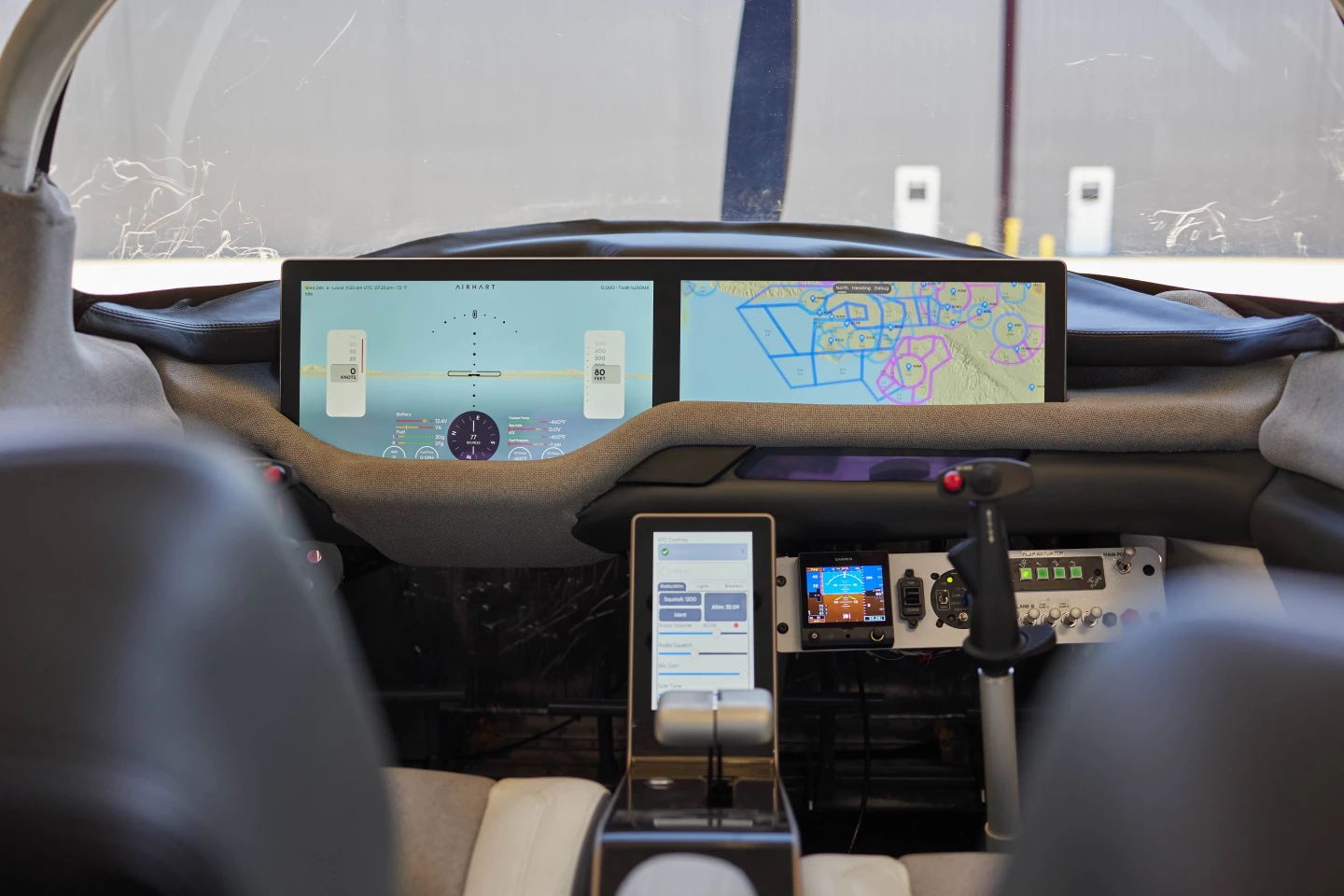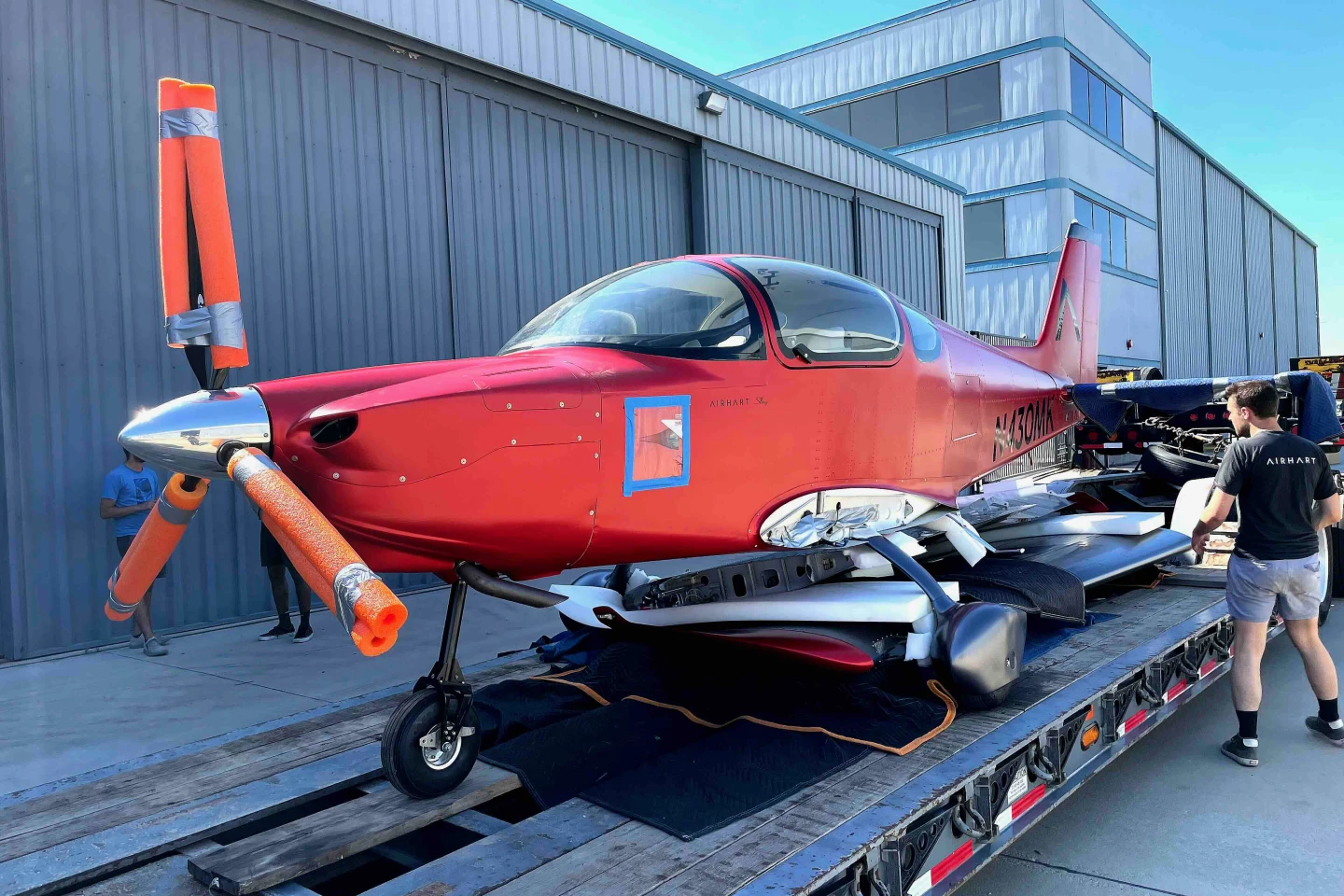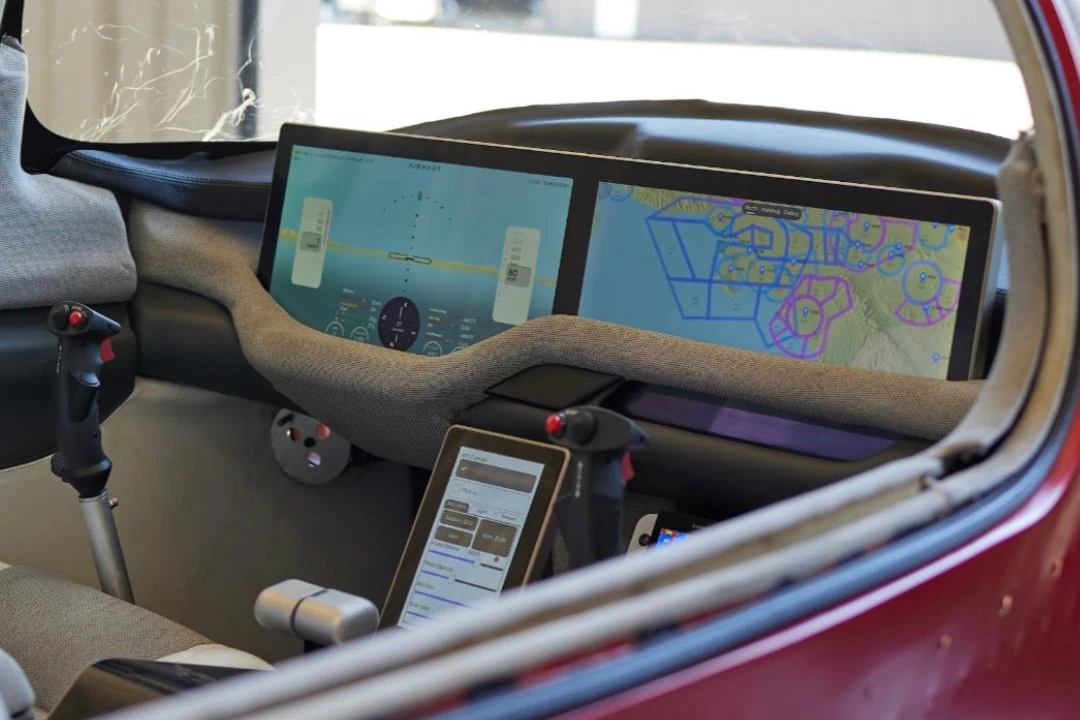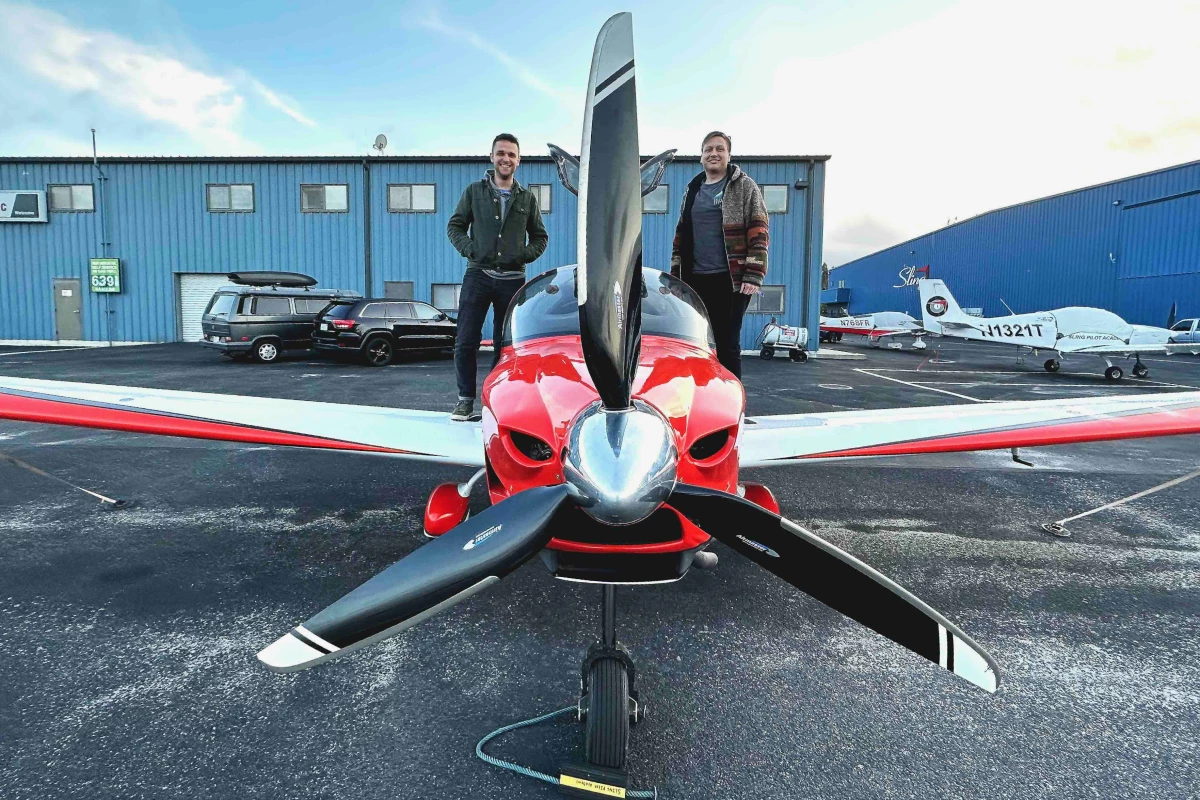When it comes to things that have a reputation for being hard to learn, flying an airplane certainly ranks among the hardest. The Airhart Sling could soon change that, however, as it's designed to radically automate and simplify the flying process.
Currently in prototype form, the four-seater aircraft is being developed by California-based Airhart Aeronautics. In a nutshell, the aim of the company is not only to make self-piloted flight accessible to a wider range of people, but also to bring down the cost of small aircraft, and to prevent up to 90% of currently-occurring aviation accidents.
The Airhart Sling utilizes the lightweight airframe of Sling Aircraft's existing TSi model, which sports a turbo-charged Rotax 915iS engine, a cruising speed of 170 mph (274 km/h), and a range of 800 nautical miles (921 miles/1,482 km). It burns fuel at a rate of 7.4 gallons (28 liters) per hour.
While the Sling shares those same basic specs, it lacks much of the TSi's cockpit controls, including the steering yoke and rudder pedals. Instead, it utilizes a single control stick known as the Airhart Assist.

According to Airhart Aeronautics, all the pilot has to do is push that stick in the direction they wish the plane to fly, such as when they're performing takeoffs and landings. An onboard computer system relays those flight commands to the airplane's engine and control surfaces via an electronic fly-by-wire setup, automatically performing the desired maneuvers.
The aircraft additionally automates processes such as filing flight plans and performing pre-flight checklists.
"We want to have it be much more like a typical driving experience, where you enter in a destination and our software figures out the best route to get there, taking into account terrain, weather, airspace congestion, all that kind of stuff," says Airhart CEO and co-founder Nikita Ermoshkin, an electrical and systems engineer who previously worked on SpaceX's Falcon 9 rocket.

Plans also call for the plane's avionics system to automatically convert all radio communications to text displayed on a cockpit screen. That way, the pilot will have a transcript of all the information conveyed by air traffic controllers, instead of having to interpret and memorize it on the fly (no pun intended).
Further down the road, the system may even be able to verbally communicate with controllers via automated voice technology.

Sling pilots currently require the same level of training as they would for any other private plane, although that may soon no longer be the case.
"With the current proposed regulations called MOSAIC, they're including provisions for learning in aircraft with simplified control schemes like ours, where you would basically get not necessarily a downgraded license, but a restriction on your license that you're only allowed to fly an Airhart-Sling-type airplane," Ermoshkin tells us.
He adds that in the unlikely event of a software glitch, the control tech incorporates multiple redundancy systems to compensate. And if all else fails, the plane has a manually deployable airframe parachute.

Airhart Aeronautics is currently accepting preorders for an initial run of 50 Slings – a refundable $1,000 deposit will go towards the full price of US$500,000. Deliveries are expected to commence in 2026. If you're willing to wait a while, though, you could end up paying a lot less.
"We have a vision and a roadmap of several aircraft that we want to build, that incrementally move us towards our goal of building an airplane for a hundred thousand dollars, and making that available with all the bells and whistles," says Ermoshkin.
You can see the current prototype in flight, in the video below. And should your tastes run more towards a simpler-to-fly helicopter, you might want to check out the Skyryse One.
Source: Airhart Aeronautics







